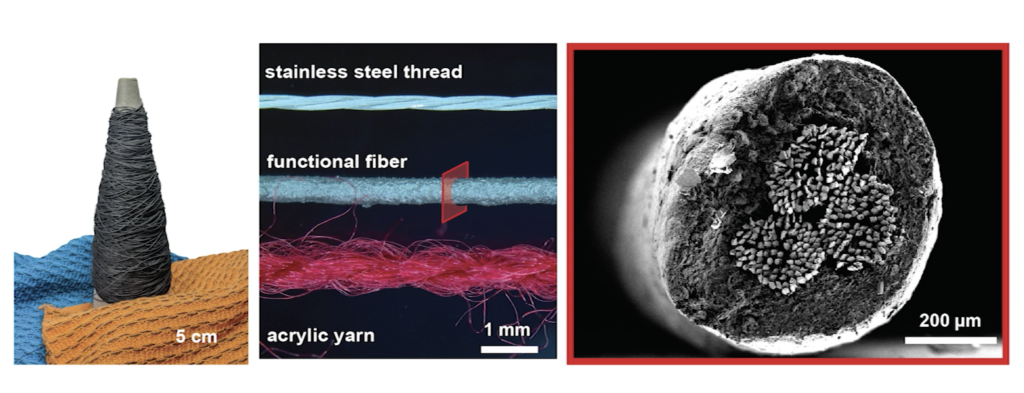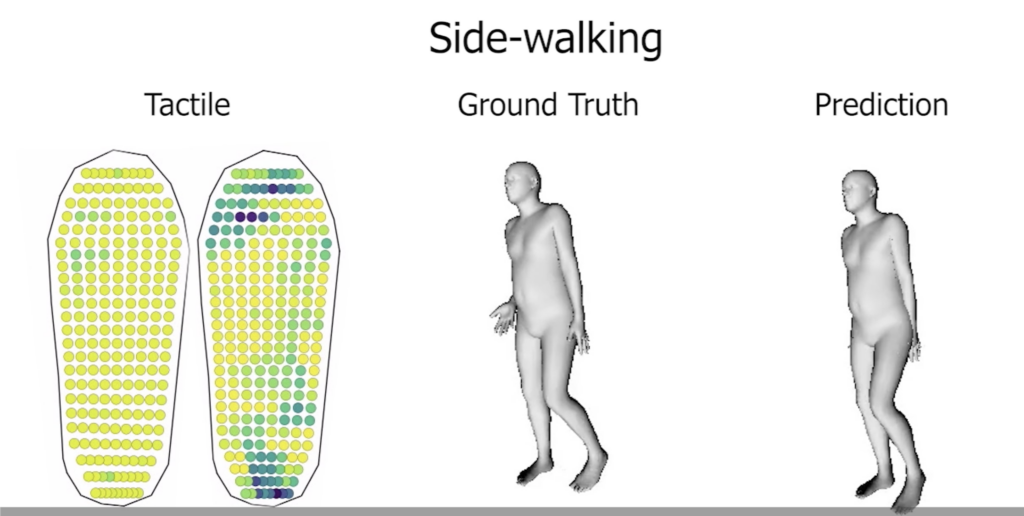
Partially funded by Toyota Research Institute, MIT professors Antonio Torralba, Wojciech Matusik and Tomás Palacios, alongside PhD students Yunzhu Li, Pratyusha Sharma and Beichen Li, postdoc Kui Wu, and research engineer Michael Foshey dived into the studies of human-environment interactions using conformal tactile textiles.
With more than a year in lockdown, a lot of us have been either sitting at our desks or reclining under the sheets against the pillows. These habits could cause long-term posture problems and physical pains. But luckily, a team of researchers at MIT CSAIL are designing smart clothing to keep us in our best physical alignments.
The researchers at MIT’s computer science and artificial intelligence lab have created a revolutionizing fabric that feels and looks like any other fabric but with the capability to sense movement from the wearer. The sensors woven into this fabric can gather data about the body movements and posture enabling enhanced body symmetry for better muscle alignment. This could be greatly useful for athletic training and health monitoring in elderly patients.
The smart clothing line includes a vest, gloves, socks with woven technology to nudge you subtly if you slouch or drag your feet to walk.
“Smarter” sensors for your smart clothing
In the last decade, we’ve seen many smart wearables for everyday wellness such as yoga pants that can guide you about your pose and smart watches that can help you track your mood and emotional health. This new wearable tech would add to the growing catalog of smart clothing helping consumers unconventionally find help regarding posture health.
Smart clothing hasn’t been fully capable of monitoring the body’s movement. But this breakthrough will get accurate data regarding the body movements through multiple sensors within the fabric. Since these sensors are interacting with the body and the environment, they don’t always deliver accurate results for researchers to study.

To tackle the problem, the researchers at MIT created a unique self-governing mechanism equipped with a machine learning (MI) algorithm that identifies when a sensor fails and makes adjustments to make up for the failure so that the data gathered is accurate. This mechanism makes MIT’s smart clothing easily the easiest to incorporate with many different types of garments with possibilities of high accuracy.
Upon first glance, the tech-infused fabric feels like any other knitted material like acrylic or wool. It would be hard to tell it apart from any other knitted fabric as the sensors are added at a fibre level before they are woven to be made into yarn. The yarn is then knitted into textiles that are comfortable to wear. The fabric is soft and stretchy to give enough room for movement.

The MIT CSAIL team has developed several prototypes to demonstrate the fabric and its ability to record movements accurately. Their catalog includes socks that can record how a foot moves and a vest that not only measures your body’s movements but also records the materials you touch and your body’s interaction with the surroundings.
The idea is to connect the fabric to an app so it can record data about the movements and alert the wearer when certain adjustments need to be made.
This could be helpful to anybody who thinks they slouch unconsciously or a professional athlete who wants to maintain a good posture. On a broader scale, this kind of smart clothing can help people prevent long-term conditions including abnormal curvature of the spine and back pain.
Watch their demo video here.
Mass-manufacturing capabilities
Unlike many wearable innovations, according to CSAIL graduate student Yiyue Luo, the fabric can be integrated into standard large-scale manufacturing. These machine-knit textiles are soft, stretchable, and breathable, highly compatible to the industries’ demands.
“Traditionally it’s been hard to develop a mass-production wearable that provides high-accuracy data across a large number of sensors,” details Lou, lead author of the paper on the subject. When you manufacture lots of sensor arrays, some of them will not work and some of them will work worse than others, so we developed a self-correcting mechanism that uses a self-supervised machine learning algorithm to recognize and adjust when certain sensors in the design are off base.”
The future of smart clothing
Researchers are looking into using smart clothing to train robots so they move in a certain way. MIT CSAIL staff plans to work on building such robots that can have tactile skins like humans so they can sense everything in their environment and behave in a certain manner.
According to Wan Shou, a postdoc at MIT’s CSAIL, “Imagine robots that are no longer tactilely blind, and that have ‘skins’ that can provide tactile sensing just like we have as humans. Clothing with high-resolution tactile sensing opens up a lot of exciting new application areas for researchers to explore in the years to come.”
The possibilities for such smart clothing are endless. If we can learn about our body movement and learn how to use it right, we’d be able to eradicate a lot of muscular problems that become heightened in later stages of life. Professional and amateur athletes would be able to train better, and the elderlies would be able to tackle age-related structural and muscular problems and live a pain-free life.


